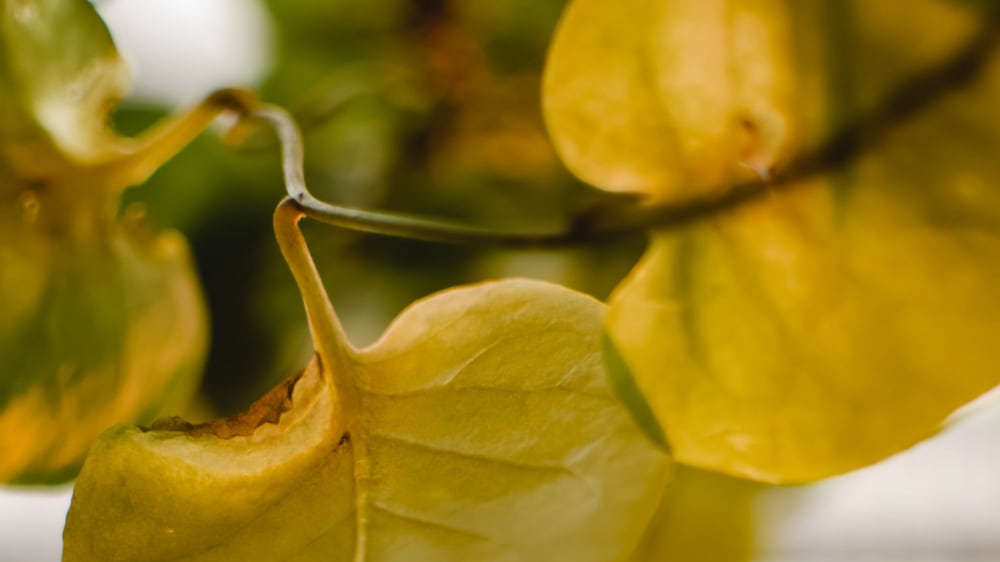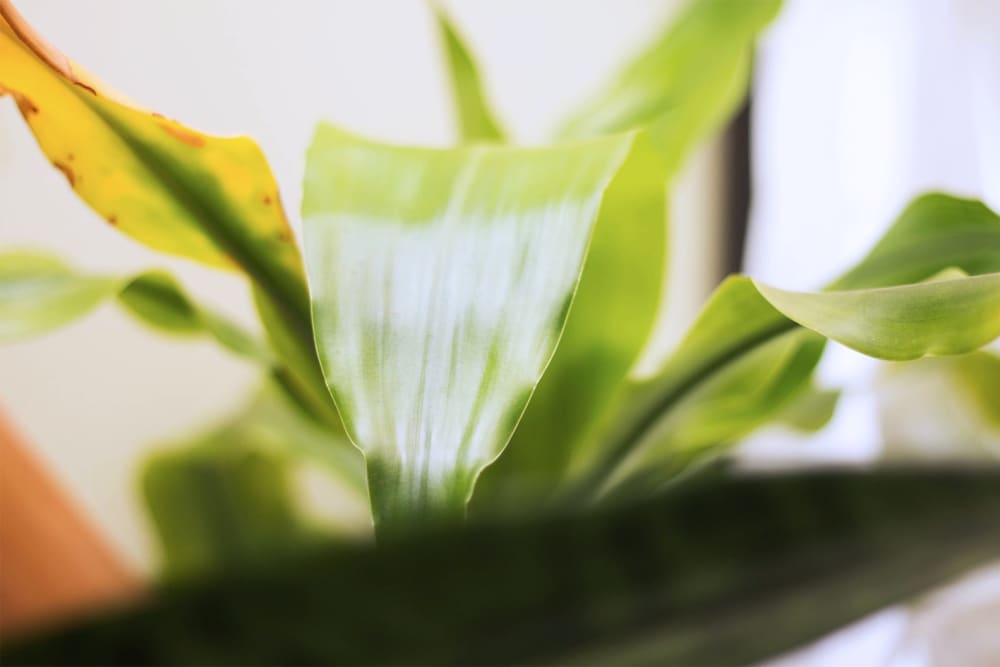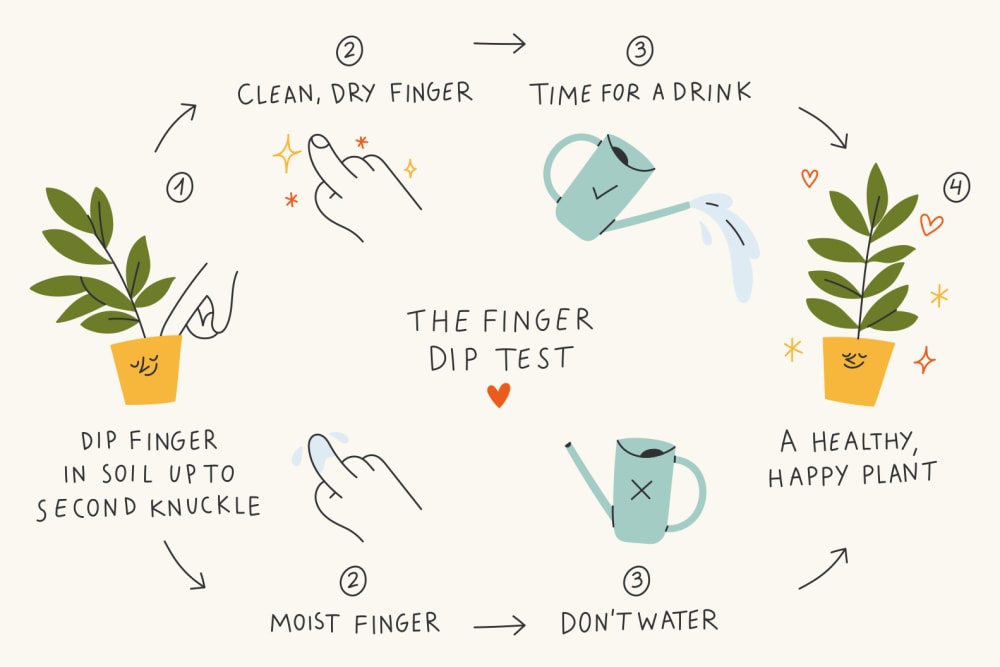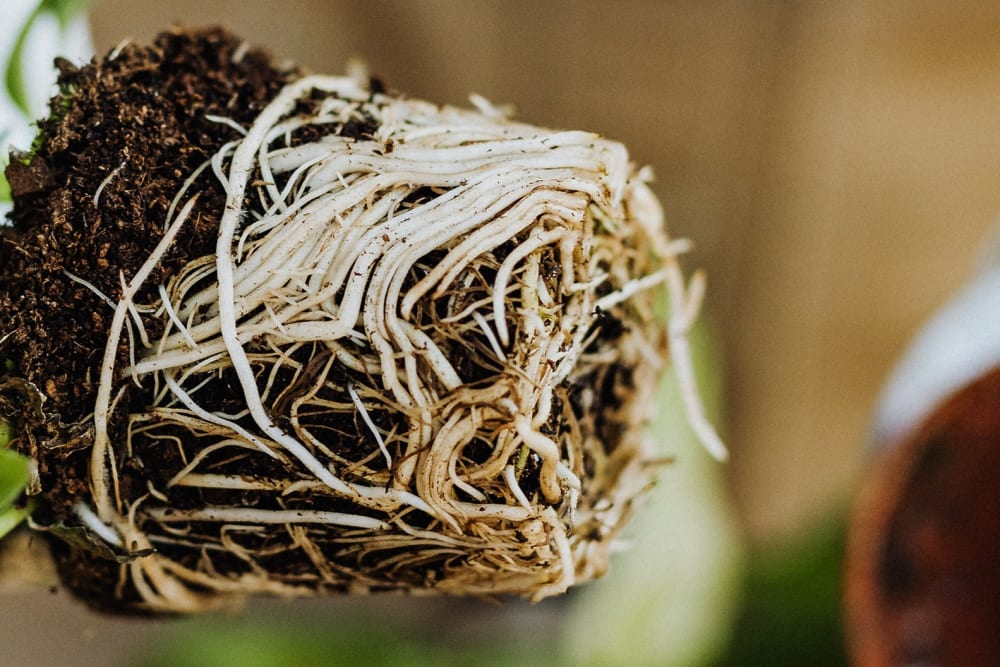Why does my plant have yellow leaves?
There are all sorts of reasons why a houseplant might have yellow leaves and almost all of them are simple to cure.

One of the most common questions asked about houseplants is, ‘Why does my plant have yellow leaves?’ At some point, they will happen to every plant parent, no matter how expert. And that’s ok. They’re not always a bad sign. There are lots of different causes of yellow leaves, so let’s tackle the most common ones and see how to fix them.
Reason 1 - Your plant is just being a plant
Yellow leaves can sometimes appear on perfectly happy, healthy plants. As most plants age, older leaves will die off, turning yellow and eventually dropping. This is so the plant can put its energy into new growth. If you see a few yellow leaves near the base of your plant, they’re probably old. New growth typically appears at the top or in the middle of a plant.
Solution: None needed. If your plant is growing new leaves, it’s healthy. Snip off any old and unsightly yellow ones.

Reason 2 - Too much water
Everyone has been guilty of overwatering. If your plant’s leaves have turned yellow and floppy and the soil feels wet, it’s probably had too much water. Most plants hate to sit in wet soil. The yellow leaves are a sign it’s stressed.
Solution: Cut back on watering. Let the soil dry and then follow the finger dip test. You should only water your plant when the top two inches of soil feel dry.
N.B. If yellow leaves persist and spread across the whole plant, it may have root rot. To check if this is the case, you’ll need to remove the plant from its pot and examine its roots. If any have gone mushy or slimy, cut them off, then repot the plant in fresh soil. Not all plants will survive root rot, but follow those steps and there’s a chance.

Reason 3 - Too little water
Yep, underwatering can cause yellow leaves too. Plants can be awkward that way. You’ll know if underwatering is the reason because the soil will be very dry and the leaves will be crispy rather than floppy.
Solution: Very easy. Water until the soil is lightly moist, then follow the finger dip test so you know when it’s time to water again.
Reason 4 - It’s pot-bound
When a plant is ‘pot-bound’, it means it’s outgrown its pot. Its roots are too tightly packed and it can’t healthily sustain itself. If this is the issue you will usually see a slight yellowing all over the plant. You would rarely see just a few yellow leaves.
To check if a plant is pot-bound, carefully remove it from its nursery pot. If the roots are circling around the edge of the pot, it might need more room. A few roots poking out of the top or bottom of the pot are not a sign your plant is pot-bound.
N.B. Some houseplants like to be pot-bound, particularly the monstera. Check your plant’s individual page to check if it likes a snug pot.
Solution: Upgrade your plant to a slightly larger nursery pot. You can find out all about repotting here (it’s not hard at all). We have accessories for repotting, like compost scoops and potting compost. If you need a larger decorative pot, we’ve got you covered there too.

Reason 5: Bugs (gross)
If you’re seeing leaves that are yellow and deformed, or are emerging yellow and damaged, you may want to check for bugs. We know, horrible, but rarely as bad as you’re imagining.
Solution: Check our bugs page to identify which critters have moved in.
That covers the main causes of yellow leaves. If you’re having yellow leaf issues and can’t find the solution here, you can drop our plant doctors a line. They’ll be able to diagnose your planty patient and give you a plan to get it back to its green best.
Never kill another plant
Plant tips. Special offers. No spam.
You might like

Complete guide to watering
How to avoid over or underwatering

Complete guide to repotting
Learn how and when to upgrade your plant’s pot

Hilton Carter’s plant styling tips
Create a magazine-worthy urban jungle